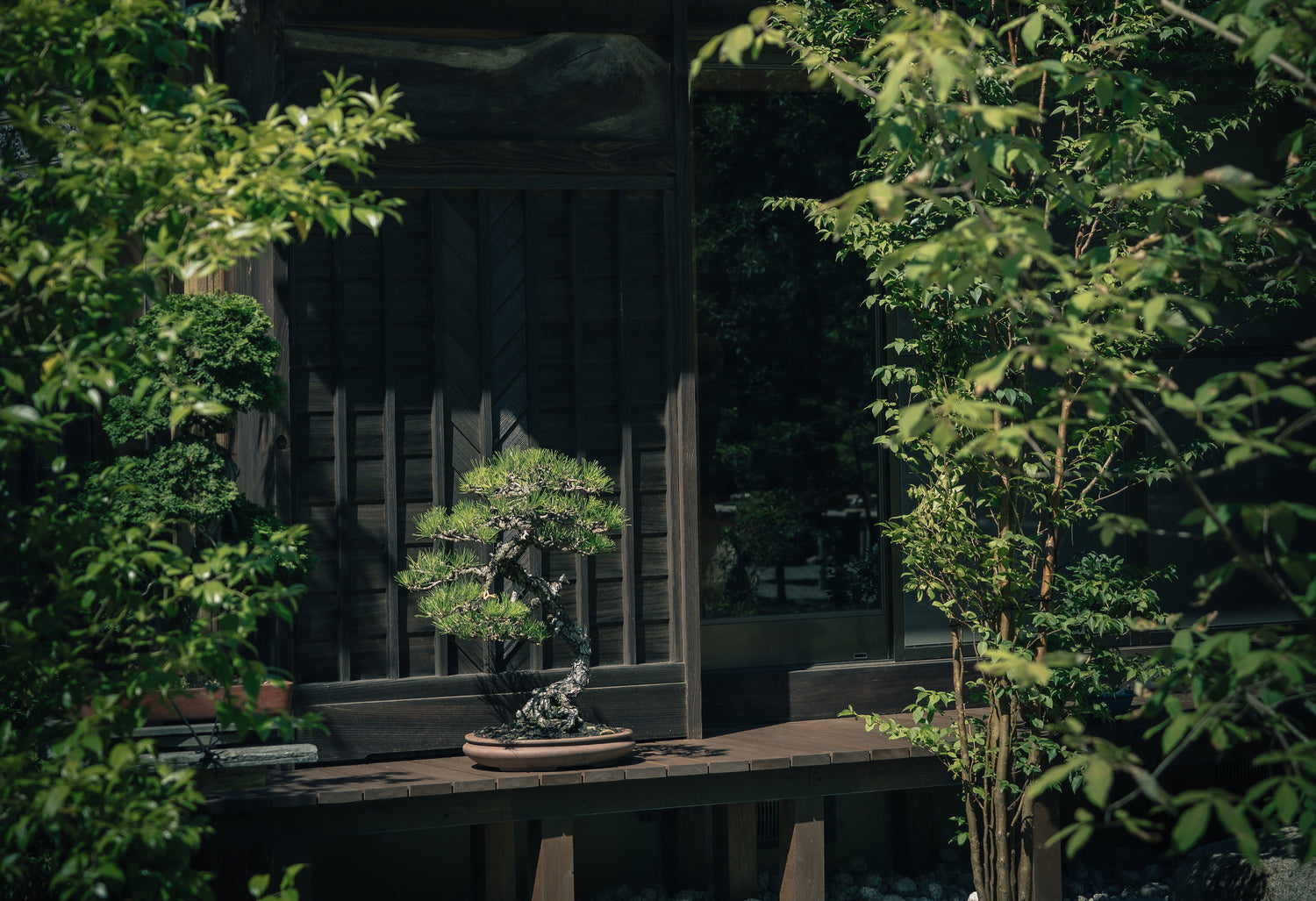Rock planting is a popular style in bonsai composition that aims to imitate the natural landscapes where trees cling to rocks for stability and nourishment. In Japan, the secret ingredient to achieving this effect is peat muck, also known as "Keto" or "Ketotsuchi". In this article, we'll take a closer look at Ketotsuchi and the various methods for creating stunning rock plantings in bonsai.
What is Ketotsuchi ?
Keto is a type of peat muck harvested from the bottom of rice paddies. It is not the same as peat moss and has a dark black color due the rich organic material content which is created by the lack of oxygen in the areas where it is harvested.

Creating the Perfect Soil Mixture for Rock Plantings
To create the ideal soil mixture for rock plantings, Ketotsuchi is mixed with small particle sized Akadama and sphagnum moss (Mizukoke) in a 1:1:1 ratio. When mixing the soil, adding water is necessary to achieve the right consistency. The goal is to create a malleable mixture that doesn't crumble, but also doesn't fall apart when shaken. This is achieved by gradually adding water while kneading the mixture to achieve a consistent blend, similar to the process of making bread. If the consistency is too loose, we can add more Akadama to stiffen it up. Once the soil mixture is at the right consistency, we can begin the rock planting process.


Three uses of stones and rocks in Bonsai
There are several methods for creating Ishitsuki style rock plantings that may or may not involve the necessity of a pot. Here are three examples that we have done at Tree House Bonsai recently.
The popular Kaede Ishitsuki
Trident maples are particularly known for their roots, which have the capacity to grow over rocks and fatten in a large nebari. A traditional method is used to attach the roots to the stone and let it become part of the trunk line. The stone gives an impression of solidity, and the covering roots convey the age of the tree installed on its rock. In the early stages of this type of composition, Keto is used to ensure that roots will take on the rock and embrace the shape closely. The stickiness and moisture of the soil helps to develop the fundamental shape of such bonsai.
In such composition, the stone and the tree are sitting in a pot where roots continue to grow into the soil in the pot and form a typical root ball at the base of the stone-trunk symbiosis.


A tree on a rock, and that’s it.
The stone serves as the pot for the tree and the rock is chosen carefully, taking into account the size and shape of the tree, to welcome the roots in pockets of soil that are large enough. The natural-looking composition gives a sense of a tree hanging to the tip of the mountain side.
Displayed on a wooden Jita or a Douban filled with sand, these compositions extensively use Ketotsuchi to provide the roots with enough soil and moisture retention capacity.

Create a small forest on a slab
This method involves planting several trees of different sizes onto a single large rock or stone slab, creating a miniature forest scene (Yose-ue style). The trees are arranged in such a way as to create depth and perspective. The stone here becomes the base, the floor of the composition, and Ketotsuchi is used to create retaining pockets of soil over the surface. Once hardened, the Keto will become like a wall to keep the Akadama from flowing out from below the trees.



Bonus example: windswept on slab composition
This white pine was planted in a stone slab and trained to grow in a windswept style, giving the impression that it has been shaped by the elements over time. This style is often used for conifers, which are naturally suited to this type of shape. The composition was arranged with additional Azalea and Chojubai to bring color throughout the year.

Don't be afraid to experiment with different methods until you find the one that best suits your artistic vision. By using the soil mixture with Ketotsuchi and carefully selecting the right type of rock, you can create a natural and harmonious landscape that highlights the importance of the stone as a central element. This unique style of bonsai emphasizes the relationship between the tree and the rock, and can bring a unique aesthetic value to your collection.


